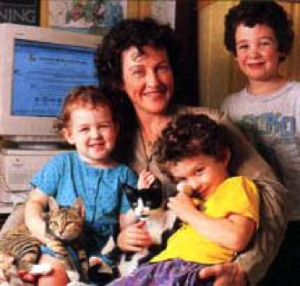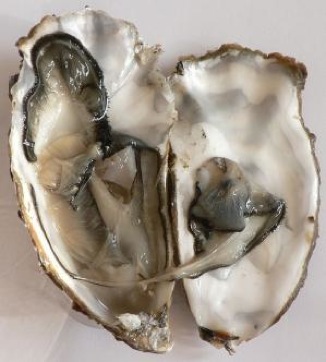
‘What I have Done, You Can do Also!’
A successful career woman just wrote to me saying she, “LOVED, LOVED, LOVED my Web Site.” But more than the Web Site alone, she told me she was inspired by ME… because on her lap was sitting a five month-old baby, her first child, and she was thinking that she doesn’t (and won’t ever) have enough time for her business.
On this day, August 31, 2000, the third anniversary of the official Web launch of the Good News Network, I wanted to take time to express, especially to new mothers who are wanting something more, or to workers in jobs that bring them no joy, that even if a person is caring for small children, or has a full-time job, there is always time, indeed, one must claim the time, to pursue a dream or fulfill a passion.
Our children were 6, 4 and 2, when I first began creating the Good News Network Web site. I utilized the early mornings beginning at 5 or 6 o’clock, waking earlier than was my lifelong habit. In order to awaken more refreshed, I stopped consuming alcohol every night, which had been a decade-old habit. I felt a clarity which made a huge difference.
I started each morning in meditation, which consisted of fully relaxing the body and simply asking and listening for guidance from my own inner wisdom as to what steps I should take in my work. The payoff was obvious very quickly in my personal life. I wasn’t so “short” with the children because my creative energy had an outlet. The frustrations of giving up a career to become a stay-at-home mom were dissipated.
But, how do you get started when you have a passion?
I came across this quote today by Robert J. McKain:
The common conception is that motivation leads to action, but the reverse is true — action precedes motivation. You have to ‘prime the pump’ and get the juice flowing, which motivates you to work on your goals. Getting momentum going is the most difficult part of the job, and often taking the first step is enough to prompt you to make the best of your day.
How do you find the time?
I mentioned waking up earlier. Second, I would urge all the new moms: Get over any guilt about entertaining a child over two years with 30 or 60 minutes of television. Make it PBS, commercial-free children’s educational television. That way, if it should work out that you are offered some time for yourself to get creative, the kids are entertained with wholesome programming. Remember, the entire family benefits when you have been energized by the joy or passion within you.
Also, Julia Cameron, in her book The Right to Write, suggests that the five, or ten, or fifteen minute slices of time that are available to us everyday should be appreciated as opportunities, rather than thrown-away as too little time for anything meaningful. When confronted with a ten or fifteen minute interval of free time — like, before you have to leave for a doctor’s apointment or pick up the kids — many of us will choose a meaningless task that we feel an obligation for like cleaning or picking up around the house. Or we choose to grasp for instant gratification by checking our e-mail.
During these opportune moments, we need to write, or act our way toward fulfilling a dream or doing what brings joy. For instance, in order to reach for a goal, does a letter have to be written to someone? A decent first draft of any letter can be crafted, or at least started, in any ten minute period.
One simple stone placed upon another is the work that builds a cathedral!
There is a saying, “Do what you can with what you have right where you are.” After three years I have amassed an archive of hundreds of news stories laid out over the 16-page Web site, and in 14 fantastic newsletters. Combined, the work constitutes the foundation — and part of the ground floor — of my personal cathedral. My house may be dirtier than yours, but it gets cleaned when company is coming! And all the while I am in the pursuit of happiness and purpose.
Finally, to those who think they haven’t found their passion yet, I say, feel around a bit more. What do you love to do, what do you love being? That is where your quarry is, where stones of passion are provided to you in order that you may strive toward your joyful potential. Begin mining for a plan by becoming still and quiet enough so your inner wisdom can guide you. Your dream begins as a process. Momentum is achieved one act and one thought at a time. And like your own cathedral, your process can be dedicated to bringing glory into the lives of your fellow travelers in the world.
Love and Success,
Geri Weis-Corbley, Founder, Good News Network
 A Congo Republic rain forest full of rare animals and trees, one of the most pristine left in Africa, will be protected from all logging thanks to the voluntary actions of a timber company to forfeit its harvesting rights.
A Congo Republic rain forest full of rare animals and trees, one of the most pristine left in Africa, will be protected from all logging thanks to the voluntary actions of a timber company to forfeit its harvesting rights.




































